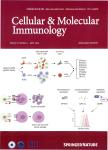Emerging roles of bile acids in chronic hepatitis,liver cirrhosis,and hepatocellular carcinoma
作者机构:Department of Laboratory MedicineFujian Key Laboratory of Laboratory MedicineGene Diagnosis Research CenterFujian Clinical Research Center for Clinical Immunology Laboratory TestThe First Affiliated HospitalFujian Medical UniversityFuzhouChina Department of Laboratory MedicineNational Regional Medical CenterBinhai Campus of the First Affiliated HospitalFujian Medical UniversityFuzhouChina
出 版 物:《Cellular & Molecular Immunology》 (中国免疫学杂志(英文版))
年 卷 期:2023年第20卷第9期
页 面:1087-1089页
核心收录:
学科分类:1002[医学-临床医学] 100214[医学-肿瘤学] 10[医学]
基 金:This work was supported by the National Natural Science Foundation of China(grant numbers 82030063,82102467) the Fujian Provincial Health Technology Project(grant number 2020QNA040)
主 题:bile cirrhosis metabolism
摘 要:Bile acids(BAs)are cholesterol-derived molecules that are produced in the liver,secreted into the duodenum,absorbed by the small intestine and recycled back to the liver[1].BAs regulate cholesterol metabolism,promote bile secretion,and emulsify and facilitate the digestion and absorption of dietary fats;in addition,there is growing evidence that BAs also act as endocrine cell signaling mediators that activate nuclear or membrane-localized receptors to trigger specific signaling pathways and regulate various biological processes,including immunity[2,3].Findings from studies in patients and cell or mouse models support the notion that BAs are critical regulators of the development of liver diseases,including chronic hepatitis B(CHB)[4],liver cirrhosis(LC)[5],and hepatocellular carcinoma(HCC)[6].Here,we discuss the emerging roles of BAs in the progression of CHB,LC,and HCC.



